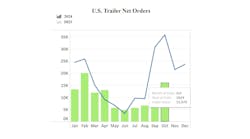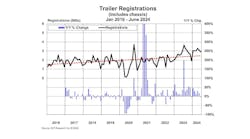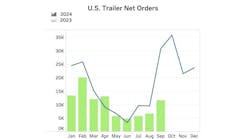While people like to imagine the New Year offers a new beginning, a chance for a clean slate, that’s not quite the way the world really works. Mistakes made in 2017 don’t just go away. On the other hand, good work done before the calendar rolled over will continue to pay dividends. So let’s take a look at where we’ve been to provide a more objective preview of where we’re going.
Manufacturing outlook: In the latest Manufacturers’ Outlook Survey from the National Association of Manufacturers (NAM), manufacturers’ optimism has risen to “unprecedented heights.”
By the numbers, with 94.6% of respondents saying they are positive about their own company’s outlook, the Q4 optimism level is the highest in the survey’s 20-year history. Optimism was at historically high levels all year, averaging 91.8% in 2017, up from a 64.3% average in 2016.
The NAM Manufacturing Outlook Index also jumped to a new record high, rising from 60.7 in the previous quarter to 63.9 in Q4. Numbers greater than 60 indicate strong levels of optimism.
Additionally, both sales and capital spending are anticipated to increase over the next 12 months at the fastest rates since mid-2011, and employment continues to trend strongly upward.
Among current business challenges, the inability to attract and retain a quality workforce is at the top of the NAM list, cited by 72.9% of respondents, with rising health care and insurance costs mentioned by 72.3% of manufacturers.
Trend: FAVORABLE
Jobs: Speaking of the employment situation, the jobless rate was at 4.1% for a third consecutive month in December. The manufacturing sector added 25,000 jobs, according to the U.S. Dept. of Labor’s year-end employment data. The largest increases were posted in the machinery (up 6,000) and fabricated metal products (up 5,400) sectors.
Manufacturing ended the year with 196,000 new jobs created in 2017. Since the end of the recession, manufacturing employment has returned nearly 1.1 million workers, to 12.54 million—the highest level of manufacturing employment since January 2009.
“It’s worth noting that factory jobs are growing at a faster rate than jobs in the overall economy,” said Alliance for American Manufacturing President Scott Paul. “Automation and robotics clearly have less of a dampening effect on manufacturing jobs than many have predicted. The key question is how to keep this factory job momentum in 2018.”
Trend: FAVORABLE (for workers), CHALLENGING (for employers)
NAFTA: President Trump continues to push hard for trade reform, and threatens to abandon NAFTA without concessions he contends will reduce the trade deficit and bring jobs back to the U.S.
However, according to a recent study by The Boston Consulting Group, commissioned by the Motor & Equipment Manufacturers Association, changes to the rules of origin could put up to 24,000 U.S. jobs at risk, and withdrawing from NAFTA could put up to 50,000 U.S. jobs at risk.
But while the big automakers are urging caution, some are hedging their bets. Earlier this month Fiat Chrysler Automobiles announced plans to spend $1 billion to move heavy-duty pickup production to Michigan from Mexico, adding 2,500 jobs. The company gave some credit to tax reform and the “improvement of the of the U.S. business environment”—earning Twitter praise from the president.
Trend: WHO KNOWS?
Taxes: We report on the recently passed U.S. tax reform package, and its impact on various segments of our readership, (read Tax reform: Floor plan interest deduction sharply reduced for trailers), but since this space is reserved for opinion we’ll add this: It’s got to be confusing for the trailer industry. In order to jam trailers into the federal truck fuel efficiency standards, the DOT determined they’re an integral part of the combination vehicle. But in the new tax code, trailer dealers will lose a substantial portion of the tax break on floor plan interest because, you guessed it, trailers are not part of the truck.
Trend: FAVORABLE (for most manufacturers and all tax specialists)
Automation: The North American automation market set new records through the first nine months of 2017, according to the latest market update from the Association for Advancing Automation (A3). Results found records set in the areas of robotics, machine vision, motion control, and motor technology.
“It’s evident that the investment companies are making in these automation technologies is having a positive impact on productivity and competitiveness, while saving and creating new jobs in North America,” said Jeff Burnstein, president of A3.
Trend: FAVORABLE
Other trends to watch in 2018: e-commerce (FAVORABLE+ for those taking advantage); vehicle electrification (FAVORABLE, especially long term); highway infrastructure investment (NEGATIVE without political will, leadership); autonomous vehicle adoption (only slightly FAVORABLE, at least for 2018—but do look for truck platooning this year); Houston Astros (A LOCK).










